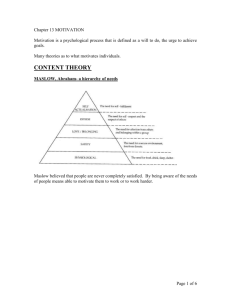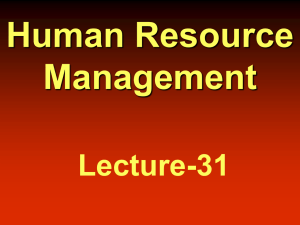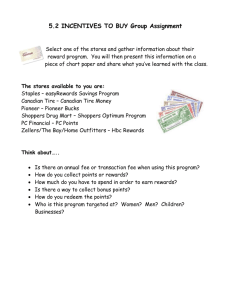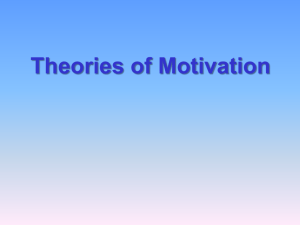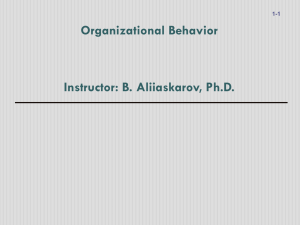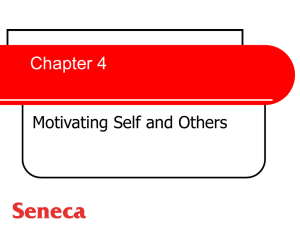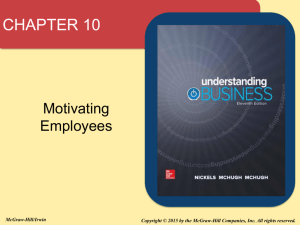Job Characteristics Model & Assembly Line Team Application
advertisement
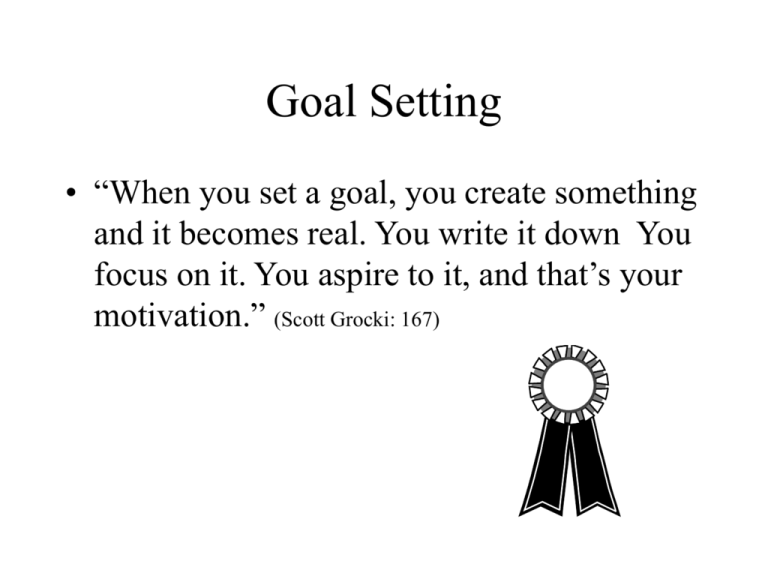
Goal Setting • “When you set a goal, you create something and it becomes real. You write it down You focus on it. You aspire to it, and that’s your motivation.” (Scott Grocki: 167) Effective Goal Setting Techniques • Consider the level of difficulty – “More difficult” goals increase energy level • Consider the level of specificity – Specific goals increase your ability to focus and to measure your progress • Employee participation in the goal setting process – Increases the level of acceptance and commitment • Long-term and short-term goals – Yearly, monthly, weekly, & daily MBO: Cascading of Objectives Organizational Objectives Divisional Objectives Departmental Objectives The XYZ Company Consumer Products Production Sales Customer Service Industrial Products Marketing Research Development Individual Objectives Prentice Hall, 2001 Chapter 7 3 Sears Auto Repair • What went wrong? – Why? • What lessons should be learned? Expectancy Theory & Performance Issues • Effort – performance relationship – Training & education • Performance – rewards relationship – Will my performance be recognized & rewarded? – How are rewards allocated? • Seniority versus merit • Is the evaluation process fair? • Rewards – personal goals – Is the reward personally desirable? • “If you perform well, we will put you in charge of our overseas office” Open Book Management • Background at SRC – Extreme financial difficulties – High level of distrust – Employees wanted more challenge • High in growth need strength (Job characteristics) Changes Implemented at SRC • Sharing financial information – Principle of job enrichment – Trust • Soliciting employee input – Recognition – Ideas are valued • Bonus plans & employee stock ownership plan – Financial incentives (short-term and long-term) Outcomes at SRC • Employees – “When I first came here, I didn’t realize that as a worker on the floor you could have a direct impact on the profit.” • Task significance (JCM) – Pay attention to costs, quality, and time to complete work • Responsibility (Herzberg) Employee Outcomes (cont.) • Ideas are valued • Recognition (Herzberg) • New product – Reading and understanding financial information • Skill variety (JCM) • Growth (Herzberg) SRC’s Financial Performance • Growth – Stock price • From 10 cents to $18.60 – Employees – Profitability • Accuracy – Inventory counts Expectancy Theory Individual Effort 1 Individual Performance 2 Organizational Rewards 3 1. If I try hard, can I do it? 2. Do I need to perform at a high level to receive rewards? Personal Goals 3. Are the rewards personally desirable? Prentice Hall, 2001 Chapter 6 11


